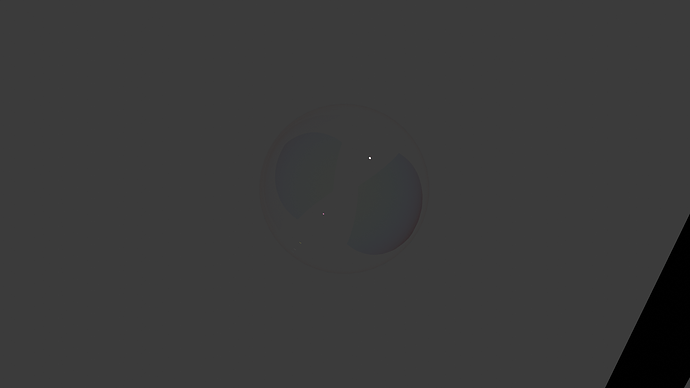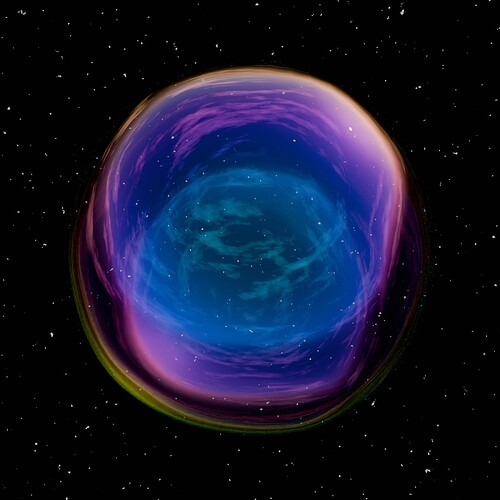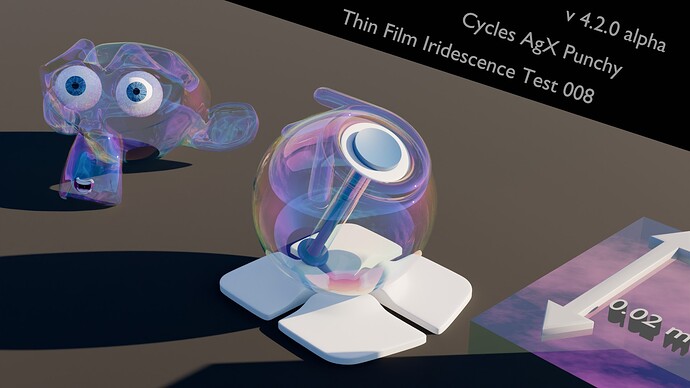There’s a test file up now – not sure how much help it is given that this is the render result:
However, it did make it clear that the Solidify modifier I used in my earlier attempts was unnecessary / contraindicated. Removed that, set Transmission Weight to 1.0, scaled the bubble down to a more realistic size, and put the Thin Film Thickness back down to 400nm:
v4p2p0alpha_Thin Film Iridescence_007.blend (142.8 KB)
Alaska said about the Thin Film IOR: “ . . . why do I use a IOR of 1.33 while the original pull request uses a IOR of 1.7 for the soap bubble . . . the paper probably just used an IOR of 1.7 to exaggerate the effect. I used a IOR of 1.33 because that’s water. Maybe the IOR of a soapy water is 1.7 due to the soap?”
Several attempts with the Thin Film IOR between 1.33 and 1.70, both these test renders use the one that looked more soapy to me, Thin Film IOR 1.52.
Although the test file was (mostly) a bust, I found the text explanation informative, especially this bit:
- Configure your Principled BSDF for your “base material” (what’s under the thin film)
- In the case of a bubble, the “base material” is air. So that means setting transmission to 1.0, roughness to 0.0, and IOR to 1.0 or close to it.
- Now you can add a thin film on top of your base material. >This is done by:
- Setting the thin film IOR (soap bubbles are made out of soapy water, so I will use a IOR of water, 1.33)
- And setting the thin film thickness (soap bubble typically range between 10nm, and 1000nm), so I will pick a value between these two that looks nice, or add some variable thickness with textures.


